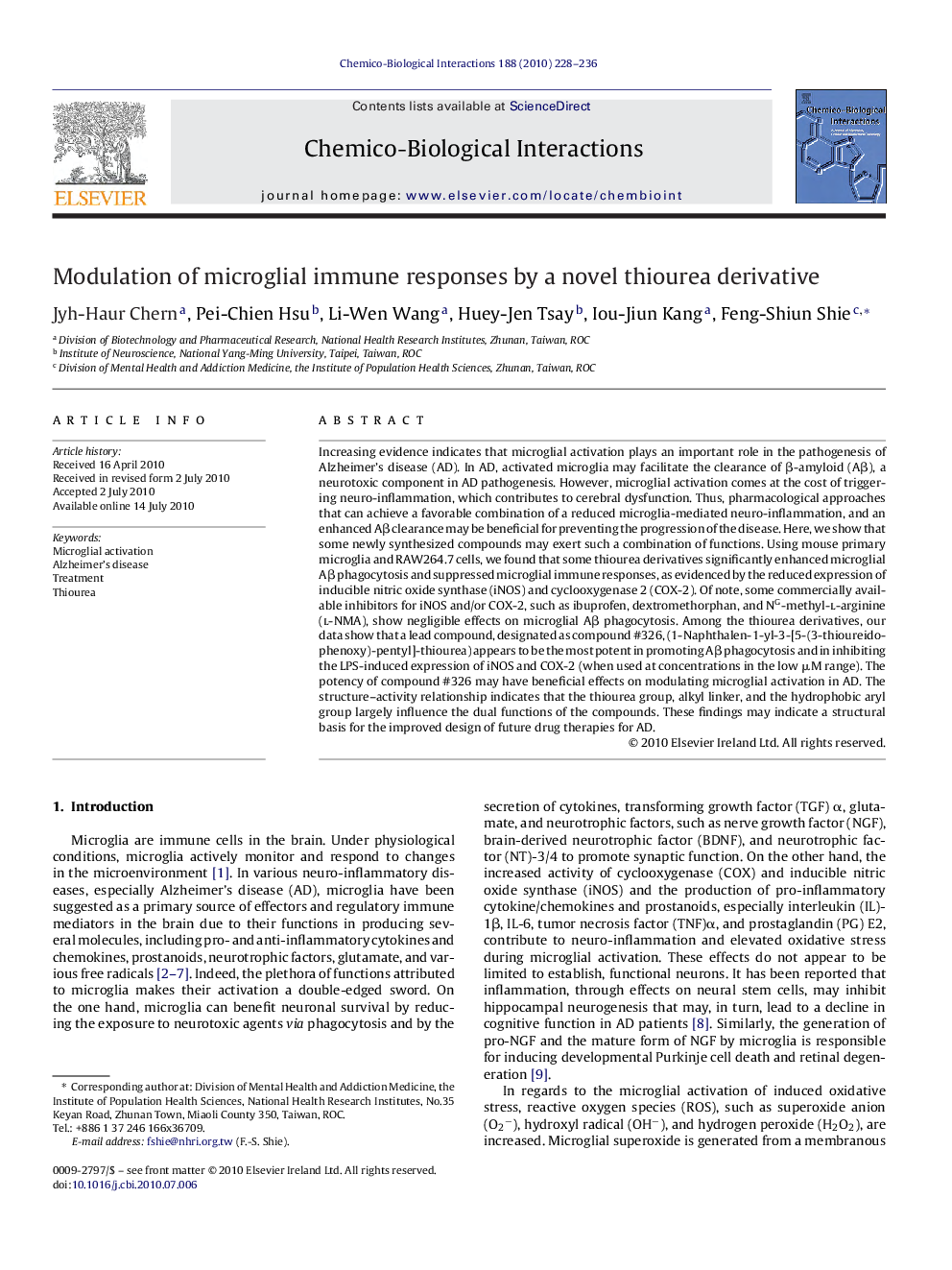| Article ID | Journal | Published Year | Pages | File Type |
|---|---|---|---|---|
| 2581066 | Chemico-Biological Interactions | 2010 | 9 Pages |
Increasing evidence indicates that microglial activation plays an important role in the pathogenesis of Alzheimer's disease (AD). In AD, activated microglia may facilitate the clearance of β-amyloid (Aβ), a neurotoxic component in AD pathogenesis. However, microglial activation comes at the cost of triggering neuro-inflammation, which contributes to cerebral dysfunction. Thus, pharmacological approaches that can achieve a favorable combination of a reduced microglia-mediated neuro-inflammation, and an enhanced Aβ clearance may be beneficial for preventing the progression of the disease. Here, we show that some newly synthesized compounds may exert such a combination of functions. Using mouse primary microglia and RAW264.7 cells, we found that some thiourea derivatives significantly enhanced microglial Aβ phagocytosis and suppressed microglial immune responses, as evidenced by the reduced expression of inducible nitric oxide synthase (iNOS) and cyclooxygenase 2 (COX-2). Of note, some commercially available inhibitors for iNOS and/or COX-2, such as ibuprofen, dextromethorphan, and NG-methyl-l-arginine (l-NMA), show negligible effects on microglial Aβ phagocytosis. Among the thiourea derivatives, our data show that a lead compound, designated as compound #326, (1-Naphthalen-1-yl-3-[5-(3-thioureido-phenoxy)-pentyl]-thiourea) appears to be the most potent in promoting Aβ phagocytosis and in inhibiting the LPS-induced expression of iNOS and COX-2 (when used at concentrations in the low μM range). The potency of compound #326 may have beneficial effects on modulating microglial activation in AD. The structure–activity relationship indicates that the thiourea group, alkyl linker, and the hydrophobic aryl group largely influence the dual functions of the compounds. These findings may indicate a structural basis for the improved design of future drug therapies for AD.
